Trending
Opinion: How will Project 2025 impact game developers?
The Heritage Foundation's manifesto for the possible next administration could do great harm to many, including large portions of the game development community.

Featured Blog | This community-written post highlights the best of what the game industry has to offer. Read more like it on the Game Developer Blogs or learn how to Submit Your Own Blog Post
Part two of this two-part article series explores musical approaches to timed challenges in Fail Factory and Spyder. Includes video examples and in-depth discussion of strategies and contrasting techniques.

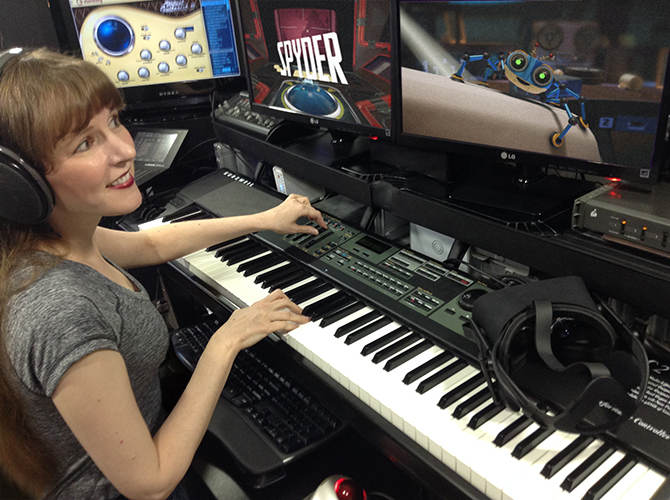
By Winifred Phillips | Contact | Follow
So happy you've joined us! I'm videogame composer Winifred Phillips. Welcome to my two-part article series on the process of composing music for timed challenges in video games! Since timed challenges are a popular gameplay mechanic that has featured prominently in my most recently released project (The Spyder DLC missions), I thought it might be interesting for us to take a closer look at what makes a timed challenge tick!
Timed challenges are famous for instilling a high degree of tension as players work to accomplish a set of tasks within a fixed period of time. In part one of this series, we looked at ways that music can be structured to align to gameplay circumstances during a timed challenge, but with the caveat that those circumstances must be fixed and predictable in nature. The timed challenge always proceeds in the same manner, so the music can be composed with a traditional beginning, middle and end. But what if there are changeable components to the timed challenge, and the music needs to adapt to those changes? That will be the topic of our discussion today. If you haven't read part one, please take a moment to read that article first.
Are you back? Great! Let's look at a couple of examples from my past projects - one which features a simple adaptation to a single changing factor, and another that adapts in a much more elaborate way.

In the VR game Fail Factory, players assume the role of a novice worker in an awesome robot factory. The entire game consists of an assortment of wacky timed challenges that grow more complex and difficult as the game proceeds, resulting in lots of hilarious failures. The level of difficulty in the game scales upward as the game proceeds, moving from simple to expert. One of the ways that the game makes the timed challenges more difficult is by decreasing the allotted time for each task. When the team at Armature Studio asked me to compose music for these timed challenges, we all understood that the music would need to be designed specifically so that it could accelerate when the allotted time was shortened. The shorter the allowed time, the faster the music would become.
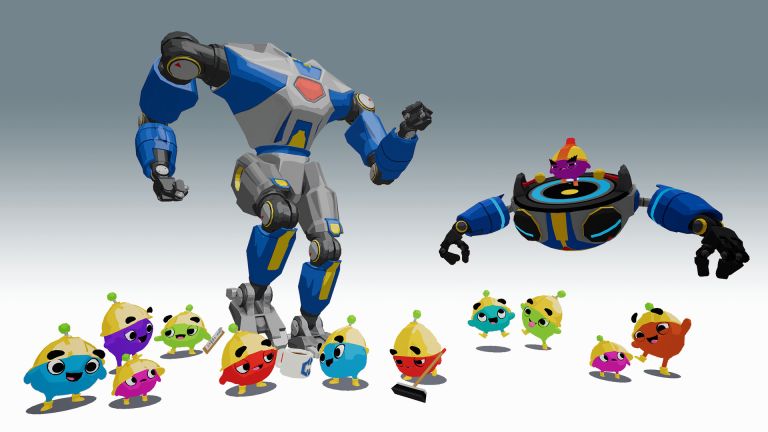
When composing this music, I looked carefully at all the musical arrangements to assess how best to structure them for playback at various speeds. There were three variations on every track for these timed challenges, proceeding from a moderate tempo, to a brisk pace, and finally to a frantic version that zips by at top speed. You'll remember that in the previous article in this series, we discussed how the music I composed for the timed challenges in Sports Scramble conveyed overt signals to the player. The same is true for the timed challenges in Fail Factory. While there isn't a vocal countdown at the beginning and end, the music includes builds and flourishes that convey the same idea.
I've included a video demonstrating how this works. In the video, the player engages in three rounds of play, with each round shorter than the last. Notice how the tempo changes from one round to the next:
This example from Fail Factory included a simple variable factor in the timed challenge, but what if there are multiple factors that have the potential to change during gameplay? How can a more complex music design address these changes?
![]() Developed by Sumo Digital, the Spyder video game features a diminutive spider-like gadget named Agent 8, who is assigned dangerous missions by a covert British intelligence agency. To keep Agent 8 on his tiny toes, his superiors have crafted devious training exercises for him, and these training missions are the basis of the timed challenges in the Spyder video game. Each unique training mission is issued on a daily basis. None of the missions can be replayed once they've been completed. After successfully finishing the day's Micro Mission, players must wait until the next day so that they can tackle a whole new training challenge. After completing the challenge, players receive a score for their daily Micro Mission, and those scores are posted on the game's leaderboard. There's only one chance to victoriously complete the mission with the highest score possible.
Developed by Sumo Digital, the Spyder video game features a diminutive spider-like gadget named Agent 8, who is assigned dangerous missions by a covert British intelligence agency. To keep Agent 8 on his tiny toes, his superiors have crafted devious training exercises for him, and these training missions are the basis of the timed challenges in the Spyder video game. Each unique training mission is issued on a daily basis. None of the missions can be replayed once they've been completed. After successfully finishing the day's Micro Mission, players must wait until the next day so that they can tackle a whole new training challenge. After completing the challenge, players receive a score for their daily Micro Mission, and those scores are posted on the game's leaderboard. There's only one chance to victoriously complete the mission with the highest score possible.
Because there's only one chance to obtain the highest possible score, the Micro Missions can be fraught with a visceral urgency. I decided that the music for these timed challenges would be especially anxious. Sumo Digital designed each training mission to feature multiple tasks that had to be completed in order to advance. With that in mind, I worked with the audio team at Sumo Digital to execute a music implementation structure that would react quickly to player successes while simultaneously informing the player about the passage of time. The construction featured both vertical and horizontal considerations, so I'll address these one at a time.
 Each training mission lasts precisely 3 minutes, with a three second introduction. I composed the music in multiple layers, stacked vertically. We've discussed the Vertical Layering technique in previous articles – that technique was especially useful for these timed missions. For this Vertical Layering construct, there are three distinct layers:
Each training mission lasts precisely 3 minutes, with a three second introduction. I composed the music in multiple layers, stacked vertically. We've discussed the Vertical Layering technique in previous articles – that technique was especially useful for these timed missions. For this Vertical Layering construct, there are three distinct layers:
The "Low" layer is always present, triggered at the very beginning of the mission. It's essentially the base layer to which other layers are added. As the first music that players hear, this layer is designed to convey a low level of anxiety (hence the  name). The instrumentation reflects the scientific nature of the laboratory in which the training mission takes place, with lightly futuristic synthesizer patterns and small-scale computer-inspired effects.
name). The instrumentation reflects the scientific nature of the laboratory in which the training mission takes place, with lightly futuristic synthesizer patterns and small-scale computer-inspired effects.
In addition, a ticking clock reinforces the passage of time and encourages players to make haste. Light percussion supports and surrounds the ticking, subtly elevating the energy level. Finally, some soft synthetic pads float through the mix, establishing the element of suspense.
The "Medium" layer only triggers after the player achieves a certain level of success in the training  mission. Therefore, it's entirely possible that this layer might never be heard (if the player never meets the minimum requirements of success).
mission. Therefore, it's entirely possible that this layer might never be heard (if the player never meets the minimum requirements of success).
When triggered, the Medium layer adds a confident synth bass line and infectious, head-nodding drums designed to give players some satisfaction as a reward for their progress so far.
The "High" layer is only heard by the most successful players. In this layer,  the full brass section is joined by a string orchestra, bursting forth with a swaggering rendition of the main theme melody of the Spyder game.
the full brass section is joined by a string orchestra, bursting forth with a swaggering rendition of the main theme melody of the Spyder game.
Swinging triumphantly from rat-pack jazz confidence to groovy disco energy, this layer is the ultimate reward for players as they work to complete the final tasks of the timed challenge.
 So we've talked about how vertical layers can be added depending on the player's progress. The composition also had a horizontal structure that conveyed specific information to the player throughout the timed challenge. So let's discuss how the music plays out over time. I've included an image-capture of the game's countdown timer corresponding to the point in the music that we're discussing.
So we've talked about how vertical layers can be added depending on the player's progress. The composition also had a horizontal structure that conveyed specific information to the player throughout the timed challenge. So let's discuss how the music plays out over time. I've included an image-capture of the game's countdown timer corresponding to the point in the music that we're discussing.
 When the Micro Mission begins its three minute countdown, the music first asserts a distinctive "kick-off" signature that lasts three seconds. While the music doesn't feature an overt vocal countdown, it does emit a tone sequence that unmistakably conveys the impression of "ready, set, go!"
When the Micro Mission begins its three minute countdown, the music first asserts a distinctive "kick-off" signature that lasts three seconds. While the music doesn't feature an overt vocal countdown, it does emit a tone sequence that unmistakably conveys the impression of "ready, set, go!"
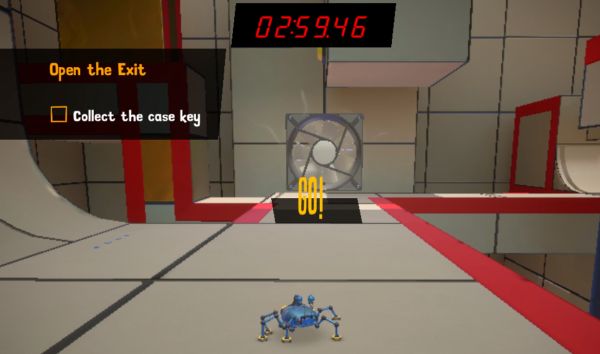
During that first minute of music, the tone and energy is fairly even-keeled and temperate, suggesting a comfortable beginning and the enjoyment of tackling a new challenge. The harmonic structure coasts along in a pleasing major mode with some playful jazz clusters.
 Once the music passes the first minute, the tone changes. A distinct sequence of computerized tones suggests we've entered a new stage. The harmonic textures darken into minor mode, and the previous light percussion introduces some darker industrial elements. The bassline becomes more insistent and complex.
Once the music passes the first minute, the tone changes. A distinct sequence of computerized tones suggests we've entered a new stage. The harmonic textures darken into minor mode, and the previous light percussion introduces some darker industrial elements. The bassline becomes more insistent and complex.
 Once two minutes of gameplay have elapsed, the emotional energy of the track palpably escalates. Again, a burst of computer tones emphasizes the sensation of change. The chord structure now begins shifting through a sequence of anxious minor chords. Percussion has darkened considerably, with dull booming accents. The bassline drops into an ominous low pulse.
Once two minutes of gameplay have elapsed, the emotional energy of the track palpably escalates. Again, a burst of computer tones emphasizes the sensation of change. The chord structure now begins shifting through a sequence of anxious minor chords. Percussion has darkened considerably, with dull booming accents. The bassline drops into an ominous low pulse.
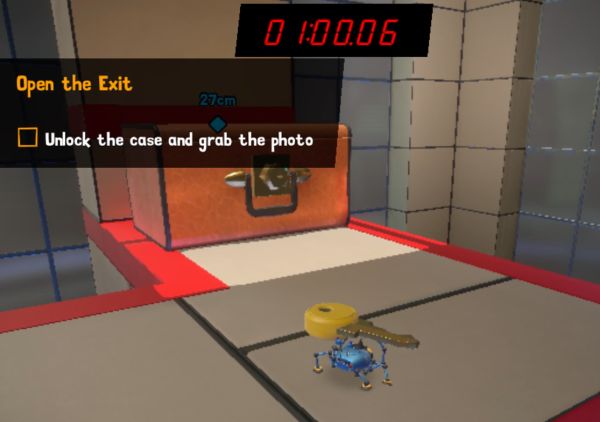
 When two and a half minutes have passed and there are 30 seconds remaining, the music sends its most overt warning message by asserting a recognizable computerized countdown effect in the form of three beeps followed by a rising alarm. The harmonic structure is now alternating between two distressed minor chords that pulse insistently. Percussion is driving, with much larger-scale drums, and the bass now asserts a relentless oscillation.
When two and a half minutes have passed and there are 30 seconds remaining, the music sends its most overt warning message by asserting a recognizable computerized countdown effect in the form of three beeps followed by a rising alarm. The harmonic structure is now alternating between two distressed minor chords that pulse insistently. Percussion is driving, with much larger-scale drums, and the bass now asserts a relentless oscillation.
 In the final ten seconds, computerized beeps and alarms are now going off rapidly in sync with the tempo. If the final "High" layer is activated at this point, it is now exploding with screaming brass and string runs that keep the energy level at peak intensity until time runs out.
In the final ten seconds, computerized beeps and alarms are now going off rapidly in sync with the tempo. If the final "High" layer is activated at this point, it is now exploding with screaming brass and string runs that keep the energy level at peak intensity until time runs out.
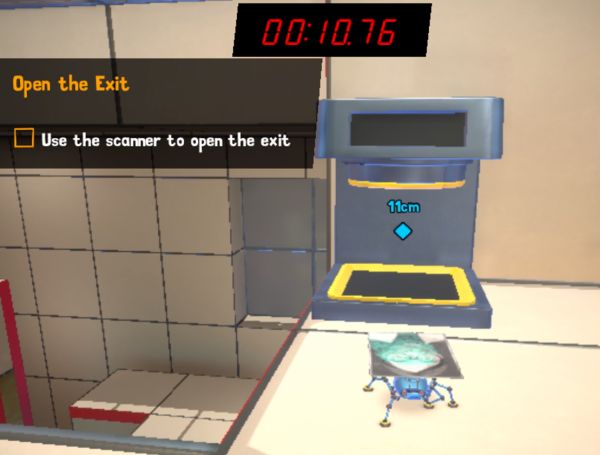
So now let's take a look at an entire playthrough of a training mission, demonstrating all of these elements in action. If you keep an eye on the countdown timer at the top of the screen during gameplay, you can follow along with the musical changes as they were just described:
Over the course of these two articles, we've taken a look at five distinct examples of music for a timed challenge. I hope you've enjoyed this exploration of the unique nature of timed challenges, and that you'll perhaps find a bit of inspiration in some of the creative solutions that I've employed in the past. Please feel free to check out my latest project, the Spyder Training Missions! Thanks for reading!
 Winifred Phillips is a well-known video game composer whose latest project is the hit PlayStation 5 launch title Sackboy: A Big Adventure (soundtrack album now available). Popular music from Phillips' award-winning Assassin's Creed Liberation score is featured in the performance repertoire of the Assassin's Creed Symphony World Tour, which made its Paris debut with performances by a top 80-piece orchestra and choir. As an accomplished video game composer, Phillips is best known for composing music for games in five of the most famous and popular franchises in gaming: Assassin’s Creed, God of War, Total War, The Sims, and Sackboy / LittleBigPlanet. She is the author of the award-winning bestseller A COMPOSER'S GUIDE TO GAME MUSIC, published by the MIT Press. As one of the foremost authorities on music for interactive entertainment, Winifred Phillips has given lectures at the Library of Congress in Washington DC, the Society of Composers and Lyricists, the Game Developers Conference, the Audio Engineering Society, and many more. Phillips’ enthusiastic fans showered her with questions during a Reddit Ask-Me-Anything session that went viral, hit the Reddit front page, received 14.9 thousand upvotes, and became one of the most popular gaming AMAs ever hosted on Reddit. Follow her on Twitter @winphillips.
Winifred Phillips is a well-known video game composer whose latest project is the hit PlayStation 5 launch title Sackboy: A Big Adventure (soundtrack album now available). Popular music from Phillips' award-winning Assassin's Creed Liberation score is featured in the performance repertoire of the Assassin's Creed Symphony World Tour, which made its Paris debut with performances by a top 80-piece orchestra and choir. As an accomplished video game composer, Phillips is best known for composing music for games in five of the most famous and popular franchises in gaming: Assassin’s Creed, God of War, Total War, The Sims, and Sackboy / LittleBigPlanet. She is the author of the award-winning bestseller A COMPOSER'S GUIDE TO GAME MUSIC, published by the MIT Press. As one of the foremost authorities on music for interactive entertainment, Winifred Phillips has given lectures at the Library of Congress in Washington DC, the Society of Composers and Lyricists, the Game Developers Conference, the Audio Engineering Society, and many more. Phillips’ enthusiastic fans showered her with questions during a Reddit Ask-Me-Anything session that went viral, hit the Reddit front page, received 14.9 thousand upvotes, and became one of the most popular gaming AMAs ever hosted on Reddit. Follow her on Twitter @winphillips.
Read more about:
Featured BlogsYou May Also Like